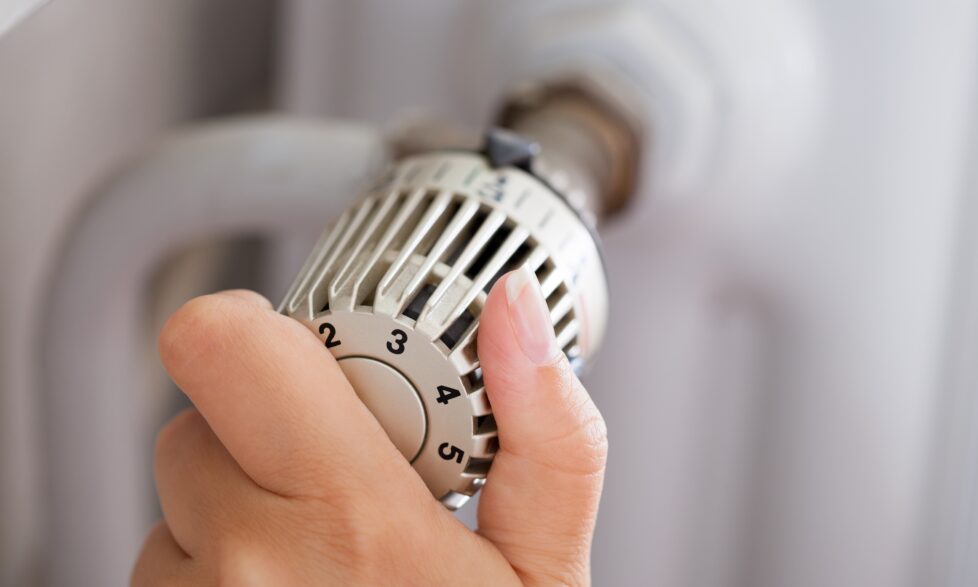April Fool – the new energy efficiency standard for private landlord homes
So if you are looking at a home to rent and its mandatory Energy Performance Certificate puts it in one of the two lowest energy efficiency bands (F or G), chances are your prospective landlord is breaking the law. What’s more, two years later in April 2020 it becomes illegal to let a Band F or G home to existing tenants, not just new ones.
At Bioregional, we’ve been looking into the impact of this new government Minimum Energy Efficiency Standard (MEES) for private rented homes. There are some really serious shortcomings in this regulation, but let’s start positive; overall, MEES is a big step in the right direction.
The private rented sector has been growing rapidly for some 20 years, with one in five UK households now being the tenant of a private landlord. It overtook the social renting sector (council and housing association homes) five years ago. Given high house prices relative to incomes, this growth may well continue.
Why are rental properties colder and more expensive to heat?
We’ve found a clear difference between the energy performance of owner-occupied homes and those let by private sector landlords. Rental properties are a more likely to be in the very worst F and G bands (7% of the stock versus 5% for owner occupied housing). They are more likely to be designated by Government as suffering from ‘excess cold’ (5% versus 3%), and damp (8% vs 3%).
These may sound like small percentages, but they represent hundreds of thousands of homes whose residents endure a grim combination of health-threatening (even life-threatening) winter cold and high energy bills. Government estimates that 21% of households in the private rented sector suffer from fuel poverty, while in the 300,000 or so privately rented Band F and G homes this rises to 46%.
Why the difference in energy performance? Private rented homes tend to be older and are more likely to be poorly converted flats, which lowers their energy efficiency. On average, people living in them have less money to spend on energy compared to owner occupiers.
But the most important factor is that owner occupiers have far better incentives to make their homes warmer than either tenants or landlords do. Why would a landlord spend thousands of pounds on improved insulation or glazing or heating equipment, if the main beneficiary is the tenant who ends up paying lower energy bills? Why would a tenant spend even a few hundred pounds on such improvements, if they are likely to move out long before they recoup their initial outlay through lower energy bills?
So while owner occupiers have spent billions of pounds in recent years making their homes more energy efficient, the pace of improvement in private rented homes has been slower
UK homes are responsible for just under a quarter of our climate-changing greenhouse gas emissions. A fifth of them are privately rented. So if housing is to pull its weight in meeting national carbon reduction targets, then the private rental sector also needs to be tackled.
New landlord responsibilities
Hence the Government’s new MEES coming into force on April 1. But there is a gigantic get out for landlords. They can claim an exemption if they have to spend any of their own money on uprating their G and F-rated homes to Band E. And since very little of anyone else’s money is available to them, nearly all of them could claim an exemption.
It’s daft but true. When the Government was devising MEES, several years ago, it thought there would be some external sources of finance for landlords. Chief of these was the Green Deal, a Government-backed energy-saving loan scheme in which the upfront cost of making improvements was paid off gradually through a top-up on electricity bills. But the Green Deal was so poorly planned and executed that there were very few takers and a couple of years after its launch the Government withdrew support.
Another potential source of finance for landlords is the Government’s Energy Company Obligation, ECO. This is money which the Government compels gas and electricity companies to spend on improving the energy efficiency of the UK’s housing stock. It is largely aimed at tackling fuel poverty and we all pay for it through our energy bills. Some private sector landlords with F and G homes will succeed in applying for ECO finance to comply with MEES, but there is nowhere near enough funding for all of them.
So MEES is threatening to come to nothing because of a mass opt-out by landlords. A few months ago, the Government belatedly proposed a solution. Landlords would have to spend up to £2,500 of their own money on bringing their Band F and G homes up to E. If they spent that amount on recommended improvements and still failed to reach Band E, then they would have complied with the revised MEES regulation.
The Government has consulted on this change and plans to bring in the amended regulation later this year. In the meantime, the current, April-fool version of MEES is still coming in on the first of the month.
If the proposed £2,500 cost cap for the landlord contribution is adopted, then according to the Government’s own analysis most of the F and G rated homes will not be up-rated to level E because that requires a higher level of spending. Our own Bioregional analysis found that most Band F homes could probably be lifted to Band E with spending of £2,500, but most Band G homes could not.
These are not the only problems with MEES. We’ve found that there is low awareness of the new standard among private sector landlords and far less among tenants. That reflects the fact that the Government has done next to nothing to make anyone notice MEES is happening. That is unsurprising, given the current mess and its slowness in making the necessary repairs to the regulation.
Local councils are meant to enforce the new standard with cash penalties for landlords who fail to comply. They have been given no resources to do this job, although they can keep the money they raise from penalties.
What could be done to improve MEES?
All that said, we come back to our starting point – MEES is fundamentally a good thing. Landlords with the most energy-wasting homes should be obliged to improve them to a minimum standard. We urge private sector landlords to comply with the spirit of MEES. There is virtue in it – they will be cutting carbon emissions and helping their tenants to save money and energy.
But there is self-interest, too. Landlords who let well maintained, up-to-date, energy-efficient homes gain a better reputation and are less likely to experience problems with voids and rent arrears.
So we recommend that landlords go further, and consider the case for reaching a higher level than Band E and spending above the £2,500 cost cap in order to do so.
Once Government has revised the MEES regulation, it should do much more to raise awareness and help local councils to publicise and enforce the new standard. Landlord associations and letting agents should also big them up.
We think the proposed cost cap should be raised to £5,000. If that happened, far more Band F and G homes can be lifted to at least Band E (although many would require even more than this).
We accept that £5,000 is not a trivial sum, but think of those few hundred thousand most energy-wasting F and G band homes as akin to the oldest, dirtiest diesel vehicles. They are sub-standard, polluting old bangers which have failed their MOT test. They must be cleaned up and made safe before they can go back on the road.







